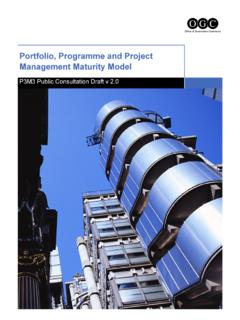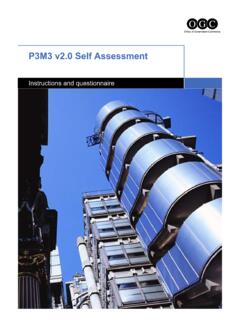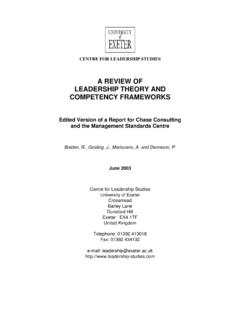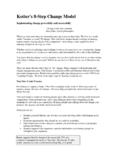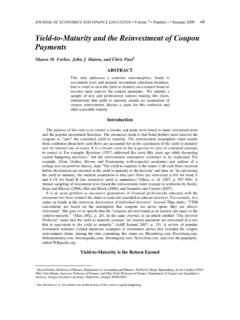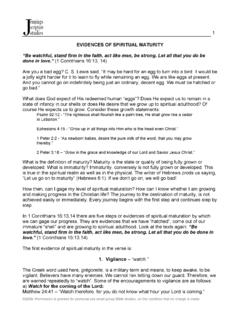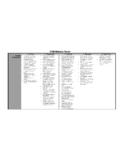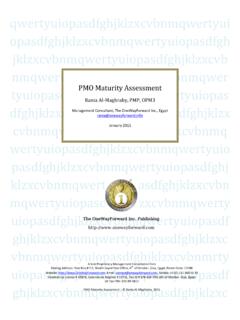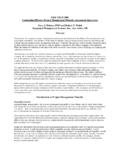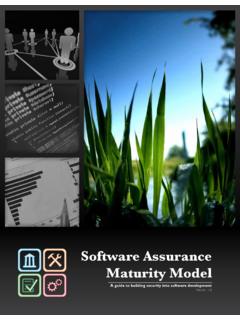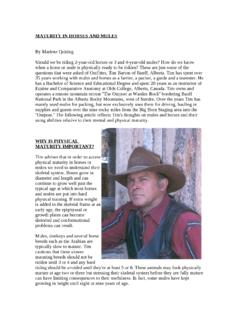Transcription of Toolkit Best Practices: Program and Portfolio Management ...
1 Toolkit Best practices : Program and PortfolioManagement maturity ModelGartner RAS Core Research Note G00141742, Lars Mieritz, Donna Fitzgerald, Barbara Gomolski, Matt Light, 13 July 2007, R2589 06282008 Gartner s Program and Portfolio Management (PPM) MaturityModel enables PPM leaders to identify shortcomings determinepriorities and establish goals for improving their maturity model is intended to support Program and portfolioactivities Findings The PPM maturity Model has six levels, ranging from zero (nonexistent) to five (fullymature). Each level is defined by the sophistication or maturity of the relevant dimensions: people,PPM processes, financial Management , technology and relationships. Role-based maturity models are a mix of organizational culture, individual capabilities andthe organization s process maturity .
2 At various levels of maturity , the amount of influenceeach of these three factors has can change. Culture and individual capabilities have theirstrongest influence at Level 0, Level 1 and Level 5, whereas process tends to bestrongest at Level 2 and Level Use the PPM maturity Model to determine the relative maturity of your PPM function. Solicit input from each functional area and all key stakeholders to arrive at a collectiveposition about which processes and how many the organization can assimilate at anypoint in time. Follow the mind-set of just enough process to accomplish the result. Create processes and approaches that are mutually reinforcing. For example, using timecards allows for better tracking of a project, which allows for better sizing of the projectportfolio, which should enable people to focus more time on fewer projects, making theirworkloads more manageable.
3 Each level has a series of appropriate processes that canbe added. Level 3 is often the sweet spot for organizations. Improvements obtained at Level 4 andLevel 5 are significant but may be inappropriate for some organizations. It is also possibleto mix and match specific capabilities within a dimension at various levels as long as thecore infrastructure to support these capabilities is in are constantly working to improve the value of their investments. Regardless ofthe economic state or the health of the particular organization, discretionary projects andinitiatives receive significant scrutiny. How well money is spent and managed within initiativesdetermines not only the business success of an overall strategy, but also the personalsuccess of those who put those initiatives into IT or other project-centric organizations, the abilityof PPM leaders to deliver results for projects andprograms has always been challenging (see Note 1).
4 As a result, there is a growing interest in building anincreasingly sophisticated approach to portfoliomanagement and the supporting disciplines of do this, every organization needs to objectivelyassess the maturity of its processes, irrespective oflocation, and begin to move forward in a logicalsequence that allows for incremental improvement,while avoiding cultural conflicts and wholesalerejection by all the concerned parties a frequentproblem with improvement plans that try to go too farand too fast for the organization to PPM maturity Model (see Note 2) is intended tohelp the senior Management of project-orientedorganizations communicate with executivemanagement about the state of the PPM function. Itenables PPM leaders to compare their organizations PPM processes and attributes to those in the Gartnermodel, and thus focus attention on areas where thegreatest improvement is The PPM maturity ModelGartner s PPM maturity Model has six levels.
5 Theselevels range from least mature, Level 0, to fully mature, Level 5(see Figure 1). The levels can be applied to any business process,but the dimensions that make up the model are unique to a roleor a this maturity model, five core dimensions are of criticalimportance in PPM. They are the most critical part of any project-centricendeavor. The interdependency among people in terms oftheir availability, their skills, their contribution to projects andtheir career aspirations are of critical processes. PPM processes comprise activities such asprioritization, which is required when multiple projects aremanaged as a unit along with many project managementprocess, such as risk and resource Management extendedfrom a single project to a Portfolio or collection of projects.
6 Oneof the most common processes is the establishment of a PMO(be it a project Management office, Program managementoffice or Portfolio Management office). systems that might beadequate when projects are paid for as part of a lump sum inthe budget become completely inadequate when they areforced to handle the granularity and level of analysis oftenrequired to support a more detailed look at multiple projectsand programs . To achieve financial Management , chargebackor allocation systems, as well as new mechanisms for trackingvalue are often 0 NonexistentLevel 1 InitialLevel 3 DefinedLevel 2 DevelopingLevel 4 ManagedLevel 5 OptimizingProgression toward full maturitySource: Gartner (July 2007)Figure 1. Six Progressive Levels of the maturity Model 2007 Gartner, Inc.
7 And/or its Affiliates. All Rights Reserved. Reproduction and distribution of this publication in any form without prior written permission isforbidden. The information contained herein has been obtained from sources believed to be reliable. Gartner disclaims all warranties as to the accuracy, completeness or adequacy of such information. Although Gartner s research may discuss legal issues related to the information technology business, Gartnerdoes not provide legal advice or services and its research should not be construed or used as such. Gartner shall have no liability for errors, omissions or inadequacies in the information contained herein or for interpretations thereof. The opinions expressed herein are subject to change without 1.
8 Project, Program and Portfolio DefinedFor this document, the following definitions apply: Project: A temporary endeavor undertaken to create aunique product, service or result. Program :Multiple related projects directed towardstrategic business and other organizational objectivesthat, when executed together, generate benefitsbeyond those that would have been generated hadthey been executed individually. Portfolio : A collection of projects and programs that aredeveloped and executed across a managementdomain, and are consolidated into a single view ofoverall value and requirements for technology evolve as thevarious PPM processes change as they move through thelevels of maturity . Additionally, PPM processes often require aunique set of tools to adequately fulfill their business must identify the touchpointsnecessary to maintain the processes outlined above.
9 Thisincludes identifying who needs to be informed, who needs tobe consulted and whose help is mandatory to ensure that thedesired processes work 1. Ability to Execute Evaluation CriteriaLevel 5:Optimized enterprise-orientationPPM leadersexist in all areasof the specialization( Program , Portfolio andstrategy) sup-ports extend-ed beyond Pipelinemanaged in , integrat-ed system sup-ports reporting,collaboration and havetheir own finan-cial resources,and full life cyclecosting is responsi-bility aspects areconsidered, aswell as impacton supply : Gartner (July 2007)Level 4:Managed increasingefficiencyNetwork of PPMleaders existcompanywide ina federatedmodel. Centersof excellenceimprove work-load manage-ment. projectsmanaged isactively addedto usersadopt tools Portfolio ismodeled andappropriatelyoptimized, factoring in realiza-tion is arefull-fledged consultants tothe 3:Defined initialintegrationPPM leader roleformalized andincreasing spe-cialization areapproved on aportfolio archi-tecture (EA) func-tions tool is inplace.
10 Are cap-tured and fore-cast. Benefits areidentified andrelated to strategyin the man-agers viewed astrusted 2:Developing emergingdisciplinePMO(s) estab-lished. Programsincreasinglymanaged in-house. Projectstaffing/resourcecapacity issuesbegin to process-es in (s) organ-ized. Emergingunderstanding ofPPM. Risk collabo-ration and teamworkspaces cost andlabor hours cap-tured. Estimateof benefit madefor each of relation-ship 1: Initial reactivePriority projectsget appropriatestaffing every-thing else is firstavailable. Nascent PPMleader role pri-marily still an indi-vidual internalprocesses cen-tered on manage-ment of criticalprojects. Vendorsare often respon-sible for large schedul-ing tools andmilestone reporting havebudgetary estimates, Actualcost can be estimated.

